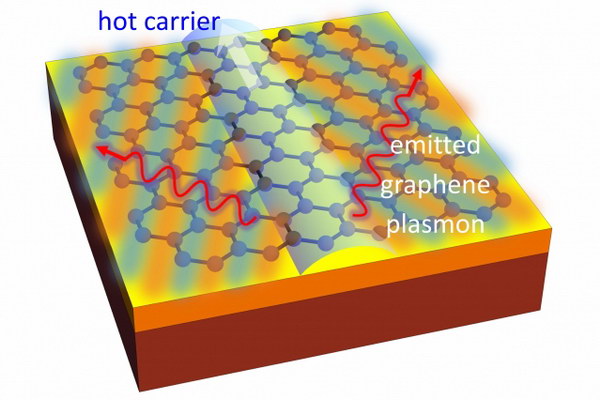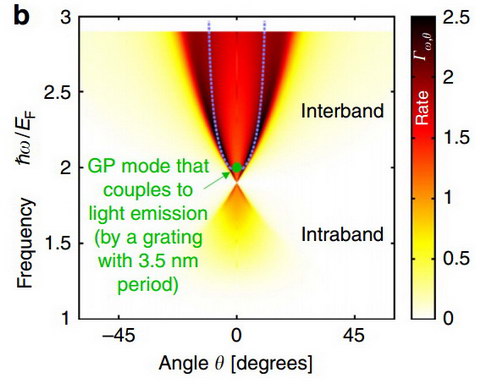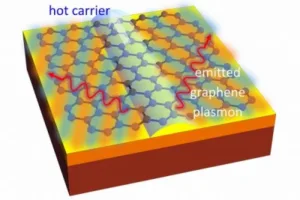It is hard to think of a light source that hasn’t been harnessed by display technologists. Sunlight is used to illuminate e-books and transflective displays. Candles and whale oil lamps were used in magic lantern displays. Incandescent lamps were used in the early equivalents of LED video walls. Fluorescent lights were used as LCD backlights. Carbon arc systems were used in early projectors, to be replaced by high intensity discharge lamps filled with xenon, mercury or other materials. Electron-beam driven phosphors served many years in cathode ray tubes, or if you prefer, Crookes or Braun tubes. I hardly need to explain to a reader of Display Daily how LEDs, Organic LEDs, lasers, quantum dots or perovskites either are in use in displays or are under development for displays.

Therefore, when a new light source technology raises its head, the display community should take notice. A paper recently published by a team of researchers from MIT and elsewhere highlights an entirely novel way to generate light. Since the technique involves graphene, a material already under investigation by the display community as transparent conductors and printable electronics, the MIT technology could conceivably lead to a complete printable display system, including both the drive electronics and the light-emitting elements. All this made out of one familiar, cheap and RoHS-certifiable material: carbon.
The work was reported on June 13, 2016 in the journal Nature Communications in an article titled “Efficient plasmonic emission by the quantum ?erenkov effect from hot carriers in graphene.” (DOI: 10.1038/NCOMMS11880) The paper was authored by two MIT professors — Marin Solja?i?, professor of physics; and John Joannopoulos, the Francis Wright Davis Professor of physics — as well as postdoc Ido Kaminer, the lead author; and six others in Israel, Croatia, and Singapore.
 This illustration depicts the process of light emission from a sheet of graphene, which is represented as the blue lattice on the top surface of a carrier material. The light-colored arrow moving upwards at the center depicts a fast-moving electron. Because the electron is moving faster than light itself, it generates a shock wave, which spews out plasmons, shown as red squiggly lines, in two directions. Credit: Massachusetts Institute of Technology
This illustration depicts the process of light emission from a sheet of graphene, which is represented as the blue lattice on the top surface of a carrier material. The light-colored arrow moving upwards at the center depicts a fast-moving electron. Because the electron is moving faster than light itself, it generates a shock wave, which spews out plasmons, shown as red squiggly lines, in two directions. Credit: Massachusetts Institute of Technology
Graphene has two properties that enable this light emission: a very high electron mobility and a very low speed for surface plasmons, a form of electromagnetic radiation (i.e. light) that travels along the surface of materials.
Under certain circumstances, the high electron mobility enables electron speeds faster than the speed of the surface plasmons. When a charged particle moves faster than the speed of light in a medium, it emits ?erenkov radiation, first described 80 years ago by Soviet physicist Pavel ?erenkov. Normally ?erenkov radiation is only of interest to astrophysicists or high-energy particle physicists dealing with high-energy charged particles moving at nearly the speed of light. In graphene, where the speed of light can be 1/300th the speed of light in a vacuum, electrons of more reasonable energies can travel faster than the speed of light and emit ?erenkov radiation.
According to the paper, “For a wide range of parameters, the emission rate of graphene plasmons is significantly higher than the rates previously found for photons or phonons, suggesting that taking advantage of the ?erenkov effect enables near-perfect energy conversion from electrical energy to plasmons.” Near perfect energy conversion from electricity to light can attract a lot of attention, not just from the display community. Due to inherent losses in the system, the researches say “near perfect” means 77–78% electrical to optical conversion is possible. In a previous 2015 paper by many of the same authors, the researchers indicated that the technique can be used to generate electro-magnetic radiation from infrared through x-rays, a very wide bandwidth that includes all visible wavelengths needed for displays.
The paper also suggests the conditions for this near-perfect conversion can exist over relatively large areas, 10µm or so. If your target pixel pitch is 450DPI, the pixel size is about 56µm, leaving plenty of room around a 10µm emitting area for graphene transistors or graphene row and column drive lines. Alternatively, multiple emitting areas can be put in a single pixel area, perhaps with different color outputs.
 Imposing a 3.5nm grating on the graphene can extract the graphene plasmons (GP) into a relatively narrow beam. (Figure 4B from the Nature Communications paper.)
Imposing a 3.5nm grating on the graphene can extract the graphene plasmons (GP) into a relatively narrow beam. (Figure 4B from the Nature Communications paper.)
Use of this technique in displays would represent a long-term research project. One basic problem would be that plasmons are a surface phenomena and it would be necessary to extract them from the graphene into free space to use them in displays. The researchers say imposing a grating with a periodicity of about 3.5nm on the graphene will extract much of the light. Perhaps some of the techniques used to extract photons from LEDs could also be applied to surface plasmons in graphene as well. The researchers suggest that in the shorter term, the technique may be used as an ultra-high speed optical computing and communications technology. The first light-emitting use of this technique is likely to be in the x-ray region.
The full article can be downloaded here for free. A less technical version of this paper was published by MIT on their news site, under the title “Researchers discover new way to turn electricity into light, using graphene.” Unless you have a PhD in physics, I recommend the MIT version.
This paper is purely theoretical. The next step is to demonstrate by experiment that the theory corresponds to reality. According to Professor Solja?i?, this demonstration is likely to be soon. “I have confidence that it should be doable within one to two years,” he says. After many more steps, likely to take several more years at least, this technique may become useful to the display community. So printed, graphene-based displays aren’t going to appear this year or next and probably not this decade. But this is a technology on the horizon that may join all the other light sources used in displays, from candles through lasers.
– Matthew Brennesholtz

